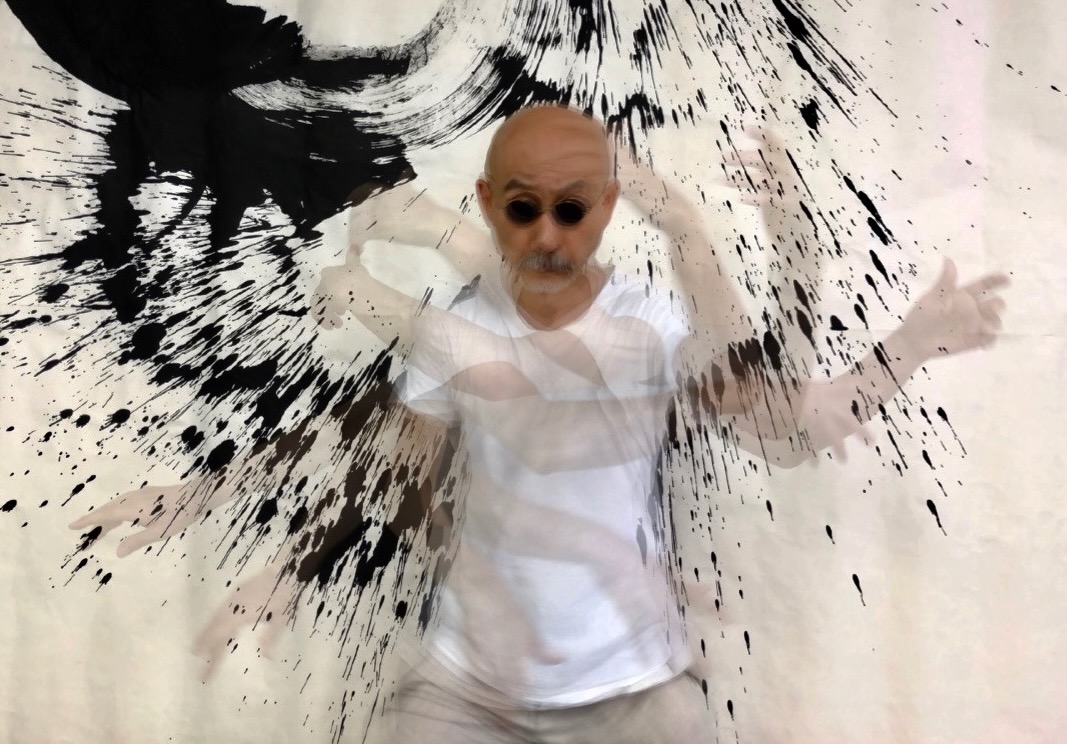MESSAGE
I began studying traditional Japanese calligraphy at the age of six. Over the course of several decades, I gradually honed my skills in this art form. Just when I felt that I had reached a high level of mastery with the brush, an incident in my studio caused me to re-evaluate my practice.
One day, I accidentally used some old and somewhat decayed sumi ink. When I applied it to the rice paper, I noticed that it spread more quickly than usual and that there were distinctive patterns of the ink that I had never seen before. When I then took a large calligraphy brush and wrote a character on a large sheet of paper using the movement of my whole body, unexpected lines appeared. I began to realize that while the controlled mastery and skilful techniques I had learnt over so many years could produce a satisfactory result of, say, 100 points, these uncontrollable 'chance' interventions could raise the score to 120 points, surpassing initial expectations. This revelation allowed me to explore my unknown self, much like the unseen part of an iceberg lurking beneath the surface.
Through this surprising experience, the broad concepts of 'nature' and 'body' became central to my artistic exploration. It gave me the opportunity to re-evaluate the relationship between man and nature, and between the brain and the body. Dualism has long divided human and nature, and brain and body. Humans are the subjects and nature is the object - controlled by humans. Similarly, the brain is seen as the command centre and the body as a mere tool controlled by the brain.
I wanted to challenge this accepted view. I decided to create works that deconstruct this binary opposition. From my perspective, humans are part of nature and should coexist with it. Rather than controlling nature, we should return to being an element of the natural world. Similarly, the brain is part of the body and coexists with it. Instead of controlling the body, it should listen to the body.
This idea led me to create my "Fossils of the Earth" series and "Listen to the Body" series.
I roll out a large canvas on the floor and walk barefoot on it, holding a glass of sumi ink in my hand. I renounce the use of a brush in order to distance myself from a skillful, controlled brushwork. My body movement becomes similar to Tai Chi, with my hands and feet tracing arcs. With my movement, I allow the sumi ink in the glass to splash onto the canvas, creating shapes and lines that exceed my expectations.
After I put the glass down, the sumi ink takes on a life of its own, spreading and puddling on the surface of the canvas. All I can do is wait patiently for several nights. I see my role as only half of the process; the other half relies on the inherent qualities of the material itself. At this point the canvas has become a field for a natural phenomenon to take place.
Eventually, once the pooled ink dries, a unique and distinctive pattern appears on the canvas. It looks as if a fossil from deep in the earth, has emerged before my eyes. It is the moment when Mother Earth sends us a message from beyond many thousands of years.
Humans have continued to burn carbon stored in the earth.
Humans have continued to dig up gold that sleeps in the earth.
The burned carbon became energy for industry, causing global warming.
The excavated gold became currency and a symbol of wealth.
Now, average global temperatures are continuing to rise.
Wealth inequality is greater than ever.
The time has come for both carbon and gold to be returned to the earth.
Throughout human history, the body has been regarded as a tool for the brain. Recently the I.T. revolution is continuing to deprive us of opportunities to use our body. Now the body may be losing even this position as a tool. In the first place, is the body a tool of the brain at all? The brain & the body, both are compared using binary opposition. It has long been considered that the former is superior to the latter. But when we regard the brain as a part of the body, we can see another scenery based on the theory of deconstruction. We can listen to our body. In order to see the true nature of the body in a new light, I have been making artwork which transmits my body's movements directly onto the paper as tracks of my action. In this series, I expressed physical movement to reconsider our physicality, almost like successive images created by high-speed photography. At this point, the canvas becomes a field where the movements of my body are recorded as traces of my action.
Brain: You're completely under my control.
Body: No, I'm not your tool.
Brain: What are you talking about!?
Body: I'm saying you're a part of the body.
Brain: You're kidding! Sooner or later I'll be able to get along well without you, with the help of robots.
Body: Listen to me. Otherwise, you will be a tool of AI in future.

